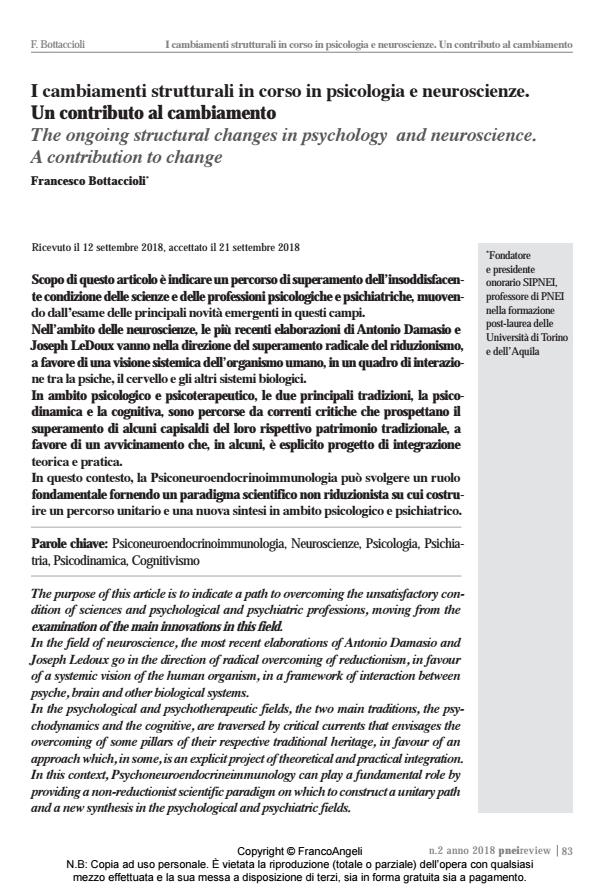The ongoing structural changes in psychology and neuroscience. A contribution to change
Journal title PNEI REVIEW
Author/s Francesco Bottaccioli
Publishing Year 2018 Issue 2018/2
Language Italian Pages 20 P. 82-102 File size 1152 KB
DOI 10.3280/PNEI2018-002007
DOI is like a bar code for intellectual property: to have more infomation
click here
Below, you can see the article first page
If you want to buy this article in PDF format, you can do it, following the instructions to buy download credits

FrancoAngeli is member of Publishers International Linking Association, Inc (PILA), a not-for-profit association which run the CrossRef service enabling links to and from online scholarly content.
The purpose of this article is to indicate a path to overcoming the unsatisfactory condition of sciences and psychological and psychiatric professions, moving from the examination of the main innovations in this field. In the field of neuroscience, the most recent elaborations of Antonio Damasio and Joseph Ledoux go in the direction of radical overcoming of reductionism, in favour of a systemic vision of the human organism, in a framework of interaction between psyche, brain and other biological systems. In the psychological and psychotherapeutic fields, the two main traditions, the psychodynamics and the cognitive, are traversed by critical currents that envisages the overcoming of some pillars of their respective traditional heritage, in favour of an approach which, in some, is an explicit project of theoretical and practical integration. In this context, Psychoneuroendocrineimmunology can play a fundamental role by providing a non-reductionist scientific paradigm on which to construct a unitary path and a new synthesis in the psychological and psychiatric fields
Keywords: Psychoneuroendocrineimmunology, Neurosciences, Psychology, Psychiatry, Psychodynamic, Cognitivism
Francesco Bottaccioli, I cambiamenti strutturali in corso in psicologia e neuroscienze. Un contributo al cambiamento in "PNEI REVIEW" 2/2018, pp 82-102, DOI: 10.3280/PNEI2018-002007